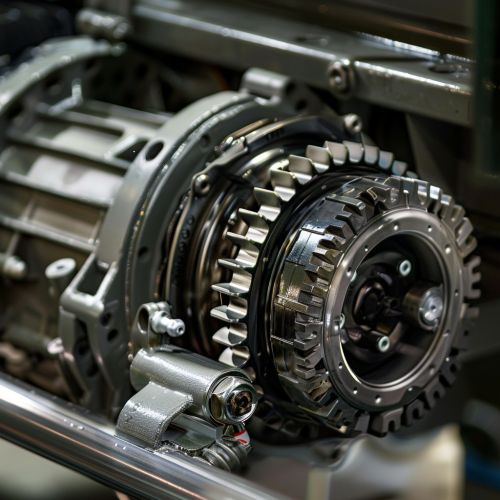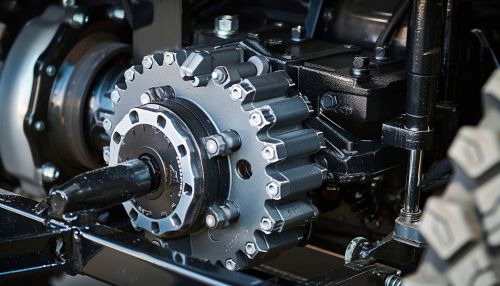Transfer case
Overview
A transfer case is a component in four-wheel drive (4WD) and all-wheel drive (AWD) vehicles that splits the power from the engine between the front and rear axles. This device is crucial for vehicles that require power to be delivered to both the front and rear wheels, such as off-road vehicles, trucks, and sport utility vehicles (SUVs).


Function
The primary function of a transfer case is to distribute power from the transmission to the front and rear axles of a vehicle using drive shafts. This is accomplished through a series of gears and, in some cases, chains. The transfer case allows the driver to switch between two-wheel drive and four-wheel drive, and in some cases, between a high range and low range four-wheel drive. This flexibility allows the driver to select the drive mode best suited to the driving conditions.
Types of Transfer Cases
There are several types of transfer cases, each with its own unique characteristics and uses.
Part-Time Transfer Case
A part-time transfer case is the simplest type of transfer case and is typically found in older 4WD vehicles. In this type of transfer case, the vehicle operates in two-wheel drive during normal road conditions, and the driver manually engages four-wheel drive when needed.
Full-Time Transfer Case
A full-time transfer case, on the other hand, always provides power to both the front and rear axles. This type of transfer case usually has a differential built into it, which allows the front and rear driveshafts to turn at different speeds. This is particularly useful for on-road driving, where the front and rear wheels often need to rotate at different speeds.
Active Transfer Case
An active transfer case is a more modern type of transfer case that uses sensors and electronic controls to automatically distribute power between the front and rear axles as needed. This type of transfer case can provide the benefits of both part-time and full-time transfer cases, with the added advantage of automatic control.
Construction and Components
Transfer cases are typically made from cast iron or aluminum and contain a number of critical components, including gears, shafts, and bearings. The specific components and their arrangement can vary depending on the type of transfer case and the specific vehicle application.
Gears
The gears in a transfer case are responsible for transmitting power from the input shaft to the output shafts. These gears are typically made from hardened steel and are designed to withstand the high torque loads that are common in 4WD and AWD vehicles.
Shafts
The shafts in a transfer case include the input shaft, which receives power from the transmission, and the front and rear output shafts, which transmit power to the front and rear axles.
Bearings
The bearings in a transfer case support the rotating shafts and allow them to turn smoothly. These bearings are typically made from steel and are designed to withstand the high loads and harsh operating conditions that are common in 4WD and AWD vehicles.
Maintenance and Troubleshooting
Like any mechanical component, transfer cases require regular maintenance to ensure their proper operation and longevity. This typically includes regular oil changes, as the oil in a transfer case serves to lubricate the gears and bearings, and to dissipinate heat.
When troubleshooting a transfer case, common symptoms of problems include unusual noises, difficulty shifting into or out of four-wheel drive, and leaks. These symptoms could indicate a variety of issues, from worn bearings or gears, to problems with the shift linkage, to a low oil level.
